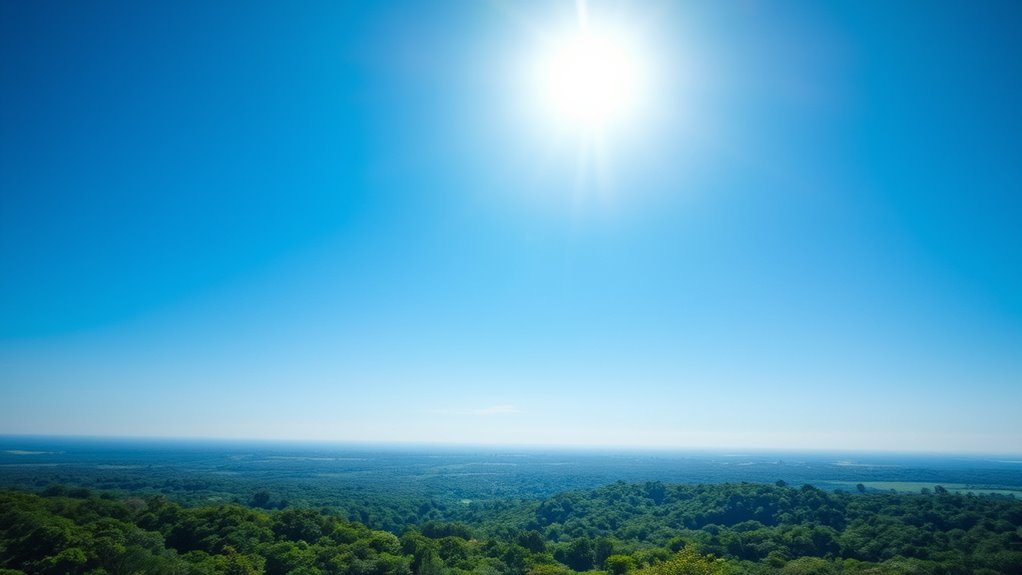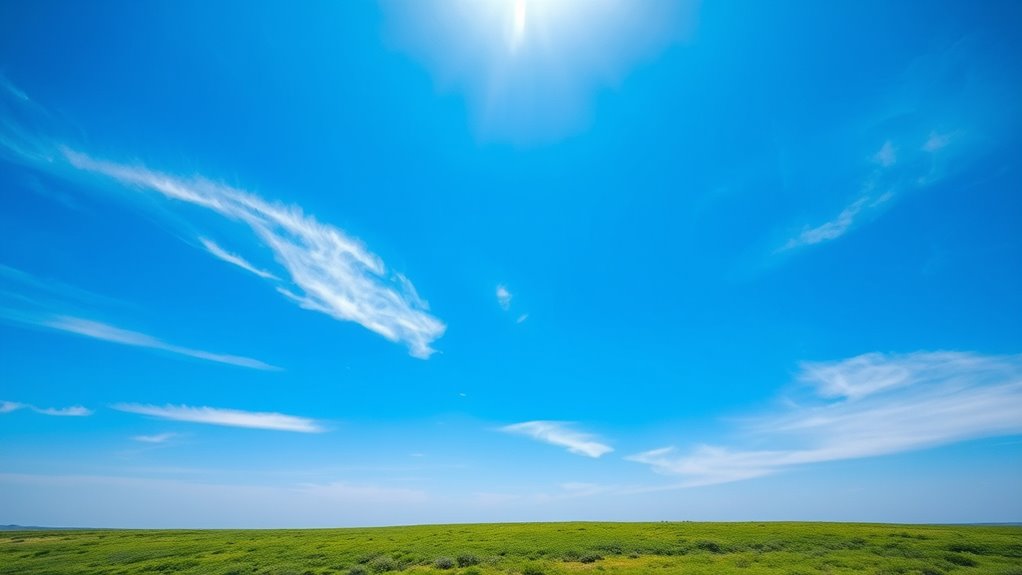The ozone layer is on track to fully recover by 2040, thanks to global efforts and international cooperation. The success of policies like the Montreal Protocol shows how targeted action can lead to real environmental improvements. Protecting the ozone layer also helps combat climate change and reduces risks from harmful UV radiation. Staying committed to these efforts is essential, and if you keep exploring, you’ll discover more about these crucial progress signs.
Key Takeaways
- Scientific projections indicate the ozone layer will fully recover by 2040 due to effective policies.
- The Montreal Protocol has been instrumental in phasing out ozone-depleting substances globally.
- International cooperation and enforcement of environmental treaties have significantly contributed to recovery.
- Reduced emissions of harmful chemicals also support broader climate change mitigation efforts.
- Continued commitment and innovation are essential to maintain progress and prevent future damage.

Thanks to global efforts to reduce harmful emissions, scientists now project that the ozone layer will fully recover by 2040. This positive outlook highlights the significant progress made through international cooperation and the implementation of effective environmental policies. You might wonder how this recovery connects to broader issues like climate change impacts. While the ozone layer primarily protects us from harmful ultraviolet radiation, its healing underscores the importance of sustained environmental action, which also helps mitigate climate change. Both challenges are intertwined, as greenhouse gases and ozone-depleting substances often originate from similar sources. Consequently, policies aimed at reducing emissions and phasing out harmful chemicals benefit not only the ozone layer but also contribute to a healthier climate.
Your role in this progress is evident, as global agreements like the Montreal Protocol have been instrumental in phasing out substances that damage the ozone layer. These policies have set a precedent for international cooperation, showing that coordinated action can lead to tangible improvements. The success of these measures demonstrates that when nations commit to environmental policies, they can curb harmful emissions effectively. This, in turn, helps slow down climate change impacts such as rising sea levels, extreme weather, and biodiversity loss. The ozone layer’s recovery is a testament to how targeted policies and public awareness can produce meaningful change, inspiring further efforts to address broader environmental issues.
Furthermore, ongoing scientific research continues to monitor ozone recovery and refine strategies for environmental protection. Looking ahead, maintaining this momentum is crucial. Continued enforcement of existing treaties, along with innovation in clean technologies and renewable energy, will be essential. Your support for policies that promote sustainability can accelerate this recovery and prevent future environmental harm. The lessons learned from ozone layer recovery offer hope that, with persistent effort, we can also limit the worst effects of climate change. It’s important to recognize that protecting the ozone layer serves as both a success story and a reminder of our collective responsibility. By prioritizing environmental policies that reduce emissions and promote sustainable practices, you contribute to safeguarding the planet for future generations.
Frequently Asked Questions
How Will Climate Change Impact the Ozone Layer’s Recovery?
Climate change can slow down the ozone layer’s recovery because of climate feedback, where rising temperatures increase greenhouse gases, which in turn affect ozone-depleting chemicals. You might not realize it, but as greenhouse gases trap more heat, they alter atmospheric conditions, making it harder for the ozone to heal. Staying aware of these interactions helps you understand how climate change directly impacts the ozone’s future.
What Regions Will Benefit Most From the Ozone Layer Healing?
Imagine the polar regions once again basking in gentle sunlight, free from harmful rays, as the ozone layer heals. You’ll notice tropical zones benefiting too, with less UV exposure damaging delicate ecosystems. These regions will experience clearer skies and healthier environments. As the ozone recovers, you’ll see a brighter, safer planet, especially for vulnerable polar ecosystems and tropical communities that rely on the balance of our atmosphere.
Are There Any Remaining Threats to the Ozone Layer?
Yes, there are still threats to the ozone layer. Ozone depletion continues due to illegal use of ozone-depleting substances, which can delay its recovery. These substances increase UV radiation reaching Earth’s surface, harming ecosystems and human health. You should stay protected from UV rays by wearing sunscreen, sunglasses, and protective clothing, especially when ozone depletion worsens locally. Remaining vigilant helps guarantee the ozone layer heals fully and stays resilient.
How Does Ozone Layer Healing Affect Global Ecosystems?
You’ll see a massive positive impact on global ecosystems as the ozone layer heals. It’s like a giant shield, protecting life from harmful UV rays caused by ozone depletion. With fewer UV rays reaching Earth, plants flourish, marine life thrives, and humans face lower skin cancer risks. This recovery helps restore balance in nature, ensuring environmental impacts become less severe, and ecosystems become more resilient and vibrant.
What Policies Are Critical to Maintaining Ozone Layer Recovery?
You need to prioritize strong policies that promote international cooperation and enforce regulations against harmful substances like CFCs. Supporting global agreements like the Montreal Protocol ensures consistent action worldwide. By holding nations accountable and tightening enforcement, you help sustain ozone layer recovery. Staying informed and advocating for policies that reduce ozone-depleting emissions is vital for maintaining this positive environmental trend and protecting ecosystems for future generations.
Conclusion
You can feel hopeful knowing the ozone layer is on its gentle path to recovery, promising brighter days ahead. While the journey isn’t completely over, the progress shows that collective efforts and mindful choices make a difference. By continuing to care for our planet, you’re helping nurture a world where the skies stay clearer and brighter. Embrace this quiet renewal, trusting that better days are quietly blooming just beyond the horizon.









